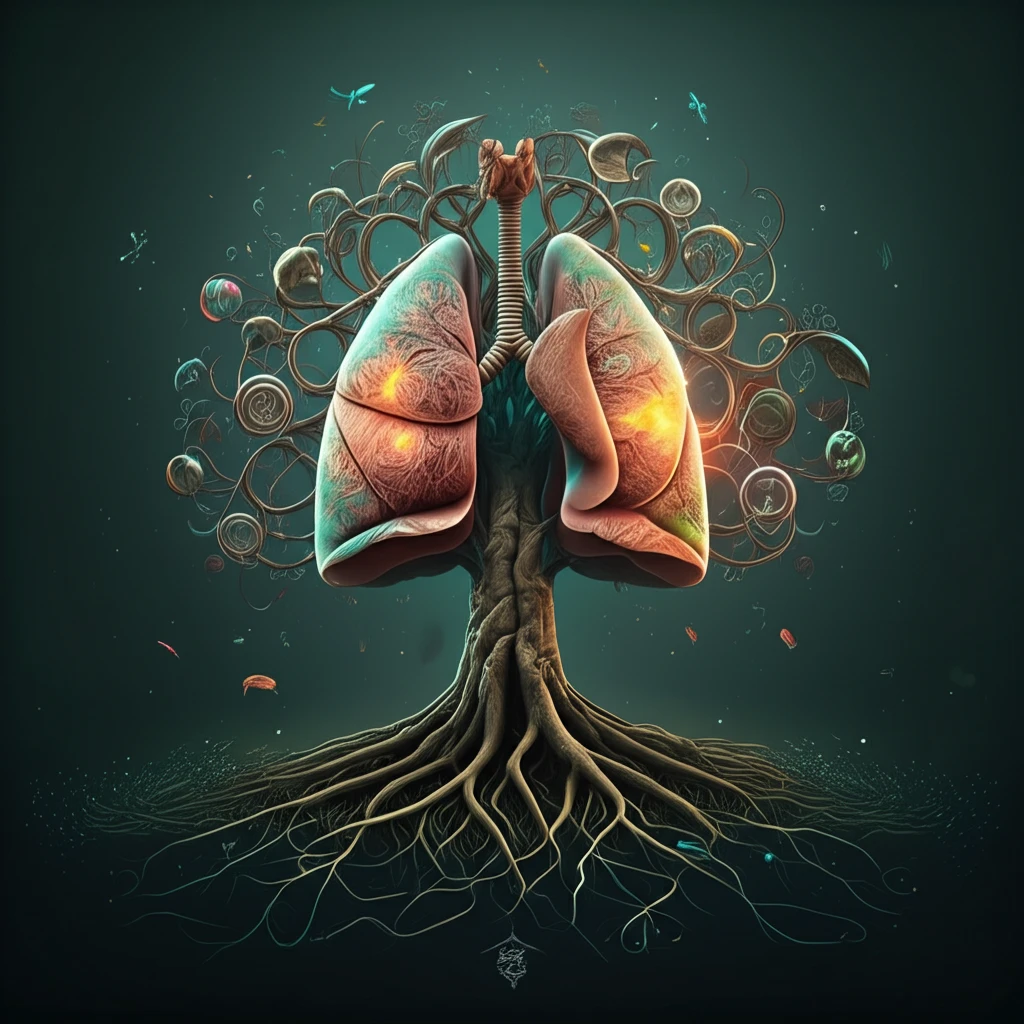
Lung Cancer and Radiotherapy: New Insights into Predicting and Managing Treatment Side Effects
"Discover how cutting-edge radiomics and personalized medicine are transforming lung cancer treatment, offering hope for minimizing radiation-induced complications and improving patient outcomes."
Lung cancer remains a formidable global health challenge, necessitating continuous advancements in treatment strategies. Radiotherapy, a cornerstone in lung cancer management, often presents a trade-off: while effectively targeting cancerous cells, it can also inflict damage on surrounding healthy tissues. This can lead to complications such as radiation-induced pneumonitis (RP) and esophageal toxicity, significantly impacting a patient's quality of life.
Recent research is focusing on identifying methods to predict and mitigate these adverse effects. The integration of 'radiomics' – the high-throughput extraction of quantitative features from medical images – with sophisticated predictive models, is paving the way for more personalized and effective cancer treatments. These advancements promise to minimize side effects, enhance treatment efficacy, and ultimately improve patient outcomes.
This article delves into recent studies exploring the use of radiomics in predicting radiation-induced complications in lung cancer patients, as well as innovative approaches to model and manage esophageal toxicity. By understanding these advancements, patients and healthcare providers can make more informed decisions, leading to better-tailored and safer treatment plans.
Radiomics: A New Era in Predicting Radiation-Induced Pneumonitis

One study highlighted the potential of radiomics in predicting radiation-induced pneumonitis (RP) in patients with locally advanced non-small cell lung cancer (NSCLC). Researchers analyzed CT images from forty-one patients, extracting 168 radiomic features from the normal lung tissue that received radiation. The goal was to identify differences between patients who developed RP and those who did not.
- Intensity-Based-Histogram-Feature (IBHF): Measures the entropy, or randomness, of the intensity distribution within the lung tissue.
- 2D-Wavelet-Transform (2DWT): Captures the frequency and spatial characteristics of the lung tissue texture.
- Gray-Level-Run-Length (GLRL): Quantifies the lengths of consecutive pixels with the same gray level, reflecting tissue texture.
- Local Binary Pattern (LBP): Identifies local patterns in the image based on the gray-level differences in neighboring pixels.
The Future of Personalized Radiotherapy
The studies highlighted here represent a significant step towards personalized radiotherapy. By integrating radiomics with clinical data, healthcare providers can develop predictive models that identify patients at risk of radiation-induced complications. This allows for tailored treatment plans that minimize side effects while maximizing the therapeutic benefit. As technology advances and more data becomes available, the precision and effectiveness of these models will continue to improve, ultimately leading to better outcomes and improved quality of life for lung cancer patients.
